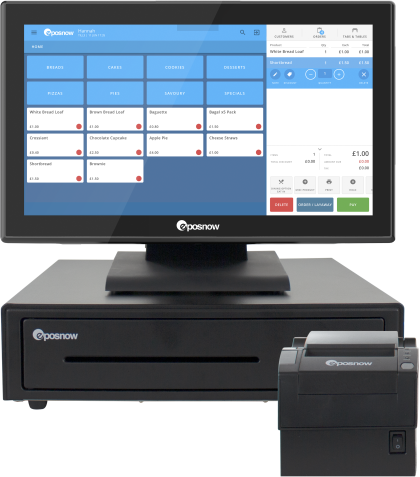What is a Good Profit Margin for Retail Stores?
The retail industry has seen an incredible transformation over recent decades. In the past, consumers shopped at several niche stores for specific products. These days, however, we often go to one supermarket for everything from clothes to food. With the emergence of these superstores comes increased competition.
Thrift stores, coffee shops, pet stores, grocery stores and most other retailers are all competing with big name superstores and online retailers for the same size market. Managing profit margins means being competitive to entice customers while ensuring the business makes enough money from each sale.
But, what is a good profit margin for retail stores? Does it matter if you sell in-store or online?
Let’s find out!
The importance of profit margins
All businesses need to earn a profit. Profit margins are the percentage difference between the cost basis of a product and the selling price.
Example: A hat costs $10 from the supplier. The retail store will list the hat at $15. $15 - $10 = $5. 5/10 is 50%. Therefore, the hat has a 50% profit margin.
It’s also important to understand different types of profit in retail: gross profit margin calculates the profit of all goods sold after deducting their cost.
Meanwhile, the net profit margin is used to assess the businesses health as a whole. It’s calculated by deducting all business expenses from revenue to show how much money a business has made.
TIP: Discover the crucial distinctions between contribution margin and profit margin in our latest blog. Understand how each metric impacts your business's financial health and strategic decisions. Read more to optimize your profitability strategies!
Managing and running your business is easier with technology that has every tool you need. Epos Now POS (point of sale) systems have hardware and software to suit your needs, generating hundreds of reports to help you know more about your business, and feel certain when the price is right.
Epos Now customers can:
- Create bespoke transaction setups on secure, speedy software to shave time off the sales process
- Choose from hundreds of apps and integrable partner programs to run accounting, marketing and other back of house functions in a way that suits you
- Access reports and manage prices and inventory on-site or off, night or day, through cloud technology
- Purchase all the retail or hospitality hardware and software and receive expert advice and support around the clock to get the best out of your business

How can margins make or break a business?
When looking at profit, businesses need to think about the percentage value instead of pounds.
A store can sell something for $10,000 but only make a 1% return. Other stores can sell something for $5 and make a 200% return. In this case, the latter store is more profitable. The amount of money made then depends on the number of sales made.
On top of the unit cost, retailers need to focus on other expenses:
- Utilities: Electricity, water, and other basic operating expenses needed to stay open
- Payroll: Don’t forget about wages and associated taxes. Customer service is crucial to a shop’s business
- Rent: Whether you lease or own your building, in the city or in a small town, you will have monthly payments
- Administrative fees: Legal services, accountants, and more can cut into your profit potential
It is important to factor all of these costs into your retail profit margin to ensure your business stays in the black. Failure to plan for even one-time payments can leave you with a nasty surprise.
Retail profit margins by business type
 What is the average profit margin in retail? How much profit margin retailers can make often depends on industry and business model. All businesses are different, but there are some general factors at play. For example, in-person retail practices differ from those of online stores.
What is the average profit margin in retail? How much profit margin retailers can make often depends on industry and business model. All businesses are different, but there are some general factors at play. For example, in-person retail practices differ from those of online stores.
CNBC and AlixPartners created sample scenarios that evaluated how margins are affected by different business models[1]. In their example, a store-bought a shirt for $40 and sold it for $100.
Here’s how much profit each store generated:
- Online: 30% return
- In-store: 32% return
- Order Online and Pickup In-Store: 23% return
- Order Online and Ship from Store: 12% return
Let’s look at what factors affect these margins and how to approach them.
Online
Ecommerce stores do not have as much overhead as retail locations which can make them the most profitable retail businesses. They typically do not need expensive storefronts or many staff members to operate as there is much less customer service.
However, their online stores have unique expenses that still cut into their margins. Managing a website can be expensive, and warehouses still use utilities. On top of this, many customers want free shipping and low prices. Even if a customer is saving one or two dollars, they will leave one website for another to get that better deal.
Shopify states that a respectable profit margin for an online store is 10%, and anything around 5% is considered low[2].
In-store
Traditional retailers have to raise prices to cover expenses like rent and utilities. They also must pay for deliveries from suppliers, and invest in some traditional marketing materials. However, in-store retail continues to outperform other forms, so the number of sales will often make up for lower gross margins. In-store retail remains a lucrative business to be in.
That said, the actual sales process is rather hands-off. Customers browse and collect their own goods, and then bring them to the checkout counter. The only packaging costs are for paper/plastic bags.
Since retail stores cater to a wide range of consumers, profit margins vary wildly. But if you’re trying to assess whether brick and mortar is a profitable retail business idea, net profit typically ranges from 0.5 to 0.75%[3].
Order online, pickup in-store
For many people, buying something online and picking it up in-store is often the best way to shop. This model saves money for the store and consumer since it avoids packaging and shipping costs.
While letting your customers pickup goods at the store doesn’t require much effort, you still need to pay for online ordering functionality and other e-commerce costs.
Since this model blends online and in-store aspects, standard profit margins range between 2% to 5%.
Order online, ship from store
Many business owners want to use their store as a shipping hub for their e-commerce site, but it actually can be quite inefficient. Retailers theoretically will pay shipping twice. Firstly to send the product to the store, and secondly to send it to the customer. Likewise, your employees will spend time stocking shelves only to unstock items and pack them for shipping.
If you run a ship-from-store model, your profit margins can suffer. It can feel like you are running two businesses at the same time.
Maximise profit potential with Epos Now
To minimize unnecessary expenses and maximize productivity, you need the right tools for the job. No tool is more vital than your point of sale system. An outdated or unreliable POS can cause you untold financial losses.
The Epos Now retail POS can manage your entire store and synchronise with your e-commerce website. It gives you everything you need to stay profitable no matter how many sales channels, sites, products or people are in your business.
With Epos Now, you can:
- Manage online and in-store products: Any product added to your store can automatically be listed on your website.
- See reports in real-time: You can access your Back Office and see live data from any device, anywhere.
- Leverage marketing tools: Expand your reach with Mailchimp and other platforms to reach new and existing customers.
- Ensure security: All data is kept safe on cloud servers, protecting against theft, corruption, and disasters.
To find out more about Epos Now solutions, submit your details below and speak to a member of our expert team.
Know more, see further ahead, and stay in front with the best business software through an Epos Now technological tool-box




